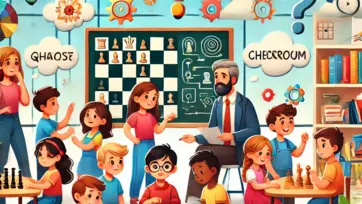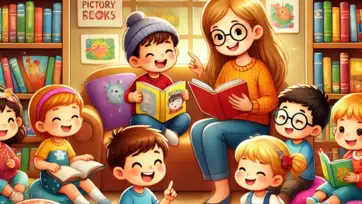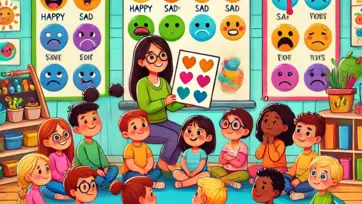Science experiments are a fantastic way to spark curiosity and excitement in children while helping them understand basic scientific concepts. With simple household items, parents and teachers can create engaging, hands-on activities that make learning fun. Here are some fun and easy DIY science experiments that kids can try at home.
1. Baking Soda and Vinegar Volcano
Concept: Chemical Reaction (Acid-Base Reaction)
Materials Needed:
- Baking soda
- Vinegar
- Dish soap (optional for extra foam)
- Food coloring
- Small container or bottle
Instructions:
- Place the small container on a tray.
- Add a few tablespoons of baking soda.
- Mix in a drop of dish soap and food coloring.
- Slowly pour vinegar into the container and watch the "lava" erupt!
2. Magic Milk Experiment
Concept: Surface Tension and Chemical Reaction
Materials Needed:
- A shallow dish
- Milk (whole milk works best)
- Food coloring
- Dish soap
- Cotton swabs
Instructions:
- Pour milk into the shallow dish.
- Add drops of food coloring in different areas.
- Dip a cotton swab in dish soap and touch the milk’s surface.
- Watch as the colors swirl and move around magically!
3. Homemade Lava Lamp
Concept: Density and Immiscible Liquids
Materials Needed:
- A clear bottle or jar
- Water
- Vegetable oil
- Food coloring
- Alka-Seltzer tablets
Instructions:
- Fill the bottle about 1/3 with water.
- Pour vegetable oil until the bottle is nearly full.
- Add a few drops of food coloring.
- Drop in an Alka-Seltzer tablet and watch bubbles rise like a lava lamp!
4. Static Electricity Balloon Experiment
Concept: Static Electricity
Materials Needed:
- A balloon
- Small pieces of paper or a dry cereal like Rice Krispies
Instructions:
- Blow up the balloon and rub it on your hair or a wool sweater.
- Hold the balloon near small paper pieces and watch them stick!
- Try moving the balloon near hair and watch it stand up!
5. Invisible Ink with Lemon Juice
Concept: Acid Oxidation
Materials Needed:
- Lemon juice
- Water
- Cotton swabs or a paintbrush
- White paper
- A heat source (lamp, candle, or iron)
Instructions:
- Mix equal parts lemon juice and water.
- Use a cotton swab to write a message on the paper.
- Let it dry completely.
- Hold the paper near a heat source and watch the hidden message appear!
6. Rainbow Walking Water
Concept: Capillary Action
Materials Needed:
- 6 clear cups
- Water
- Food coloring (red, yellow, blue)
- Paper towels
Instructions:
- Fill 3 cups with water and add food coloring: red, yellow, and blue.
- Place an empty cup between each colored water cup.
- Fold paper towels and place one end in a full cup and the other in an empty cup.
- Watch as the colors “walk” through the paper towels and mix in the empty cups!
7. Balloon Rocket
Concept: Newton’s Third Law of Motion
Materials Needed:
- A balloon
- String
- A drinking straw
- Tape
Instructions:
- Tie one end of the string to a stationary object.
- Thread the straw through the string.
- Inflate the balloon and tape it to the straw.
- Release the balloon and watch it zoom across the string!
8. Oobleck (Non-Newtonian Fluid)
Concept: States of Matter
Materials Needed:
- Cornstarch
- Water
- A mixing bowl
Instructions:
- Mix about 2 cups of cornstarch with 1 cup of water.
- Stir until the mixture turns into a gooey substance.
- Press hard on it to make it feel solid, then let go and watch it turn into liquid!
9. Dancing Raisins
Concept: Buoyancy and Gas Formation
Materials Needed:
- Clear glass
- Carbonated water or soda
- A few raisins
Instructions:
- Fill the glass with carbonated water or soda.
- Drop raisins into the liquid.
- Watch them dance up and down as bubbles attach and release!
10. Egg in a Bottle Experiment
Concept: Air Pressure
Materials Needed:
- A hard-boiled egg (peeled)
- A glass bottle with a mouth slightly smaller than the egg
- A piece of paper
- Matches (adult supervision required)
Instructions:
- Light a small piece of paper and drop it into the bottle.
- Quickly place the egg on top of the bottle opening.
- Watch as the egg gets sucked into the bottle due to changing air pressure!
Conclusion
These easy and fun DIY science experiments are perfect for kids to try at home. They encourage curiosity, problem-solving, and a love for science. By using everyday household items, learning becomes both accessible and exciting. Try these experiments with your child and watch their interest in science grow!








